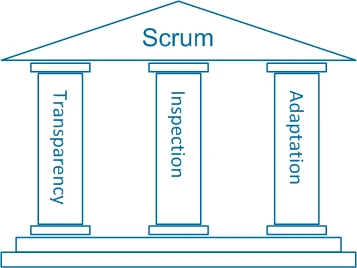The strength of any project or company is in getting all the parties involved working together in order to achieve the same goal or vision. In order for this to happen the team needs to be able to access all the information that might be useful in development.
Scrum is a popular agile theory based on the empirical process control theory. Scrum methodology is lightweight and easy to understand, but like all agile methods, it is difficult to master. The methodology documented in the “Scrum framework” is a set of team guidance practices, roles, events, artifacts, and rules to execute projects by. The theory behind Scrum is based on the three pillars of Transparency, Inspection, and Adaption:

- Transparency: This pillar involves giving visibility to those responsible for the outcome. The strength of any project or company is in getting all the parties involved working together in order to achieve the same goal or vision. In order for this to happen the team needs to be able to access all the information that might be useful in development. An example of transparency would be creating a common definition of what “done” means, to ensure that all stakeholders are in agreement.
Another aspect of transparency is related to the other two pillars. It is very difficult to Inspect something that isn’t visible. In other words, you can’t solve a problem if you don’t know what it is. Having transparency in the organization as to where things aren’t running perfectly — without assigning blame — gives the entire organization a competitive advantage, as they can then address those issues and become faster, better, and more valuable.
- Inspection: This pillar involves timely checks on how well a project is progressing towards its goals, looking for problematic deviations or differences from the goal.
An inspection happens both per iteration during retrospectives and daily during the daily scrum. Healthy inspection habits help the team and organization critically view their work and processes and see if there is anywhere the team/organization could improve. This is where transparency across the organization and within the team is important. Without that transparency, it is very difficult to inspect.
A key aspect of inspection in Scrum is that it is approached completely in a non-judgemental, non-blaming way. We aren’t interested in finding out whose fault it is, what we are interested in is finding out what we can do with this now, what have we learned and how we can do better next time
- Adaption: This pillar involves adjusting a process to minimize further issues if an inspection shows a problem or undesirable trend.
It’s not enough to just notice the problems or opportunities, the team needs to be empowered to make the changes necessary in order to either fix the problem or experiment with an opportunity. Scrum fosters a “fail fast, fail often” approach. This helps the teams to uncover any issues and address them quickly.
Another aspect of adaption is that during development oftentimes things change — new priorities, a crisis, a change of leadership, downsizing or upsizing, world events, or a market disruptor. Any number of things can dramatically change the work that needs to be done. Traditional teams, who have all the work planned up ahead, will have a hard time adapting to the new reality. They will have to go through change requests, budget negotiations, and new contracts. Teams working with the scrum framework have the benefit of being able to adapt to the new situation and deliver a valuable, relevant product to the client, faster. No contracting, no change requests, just a group of people working together to achieve a common goal.
For Scrum to be effective, each of these pillars must stand and be supported – one without the others greatly deters the effectiveness of Scrum implementation.
